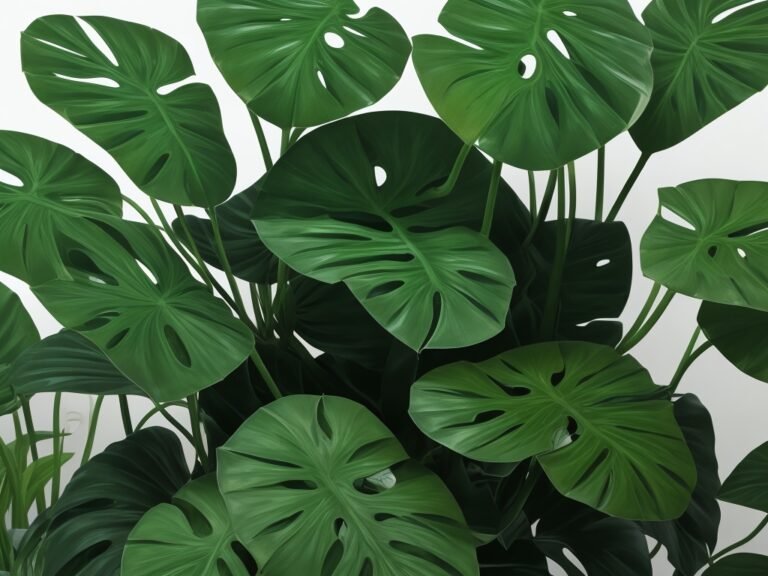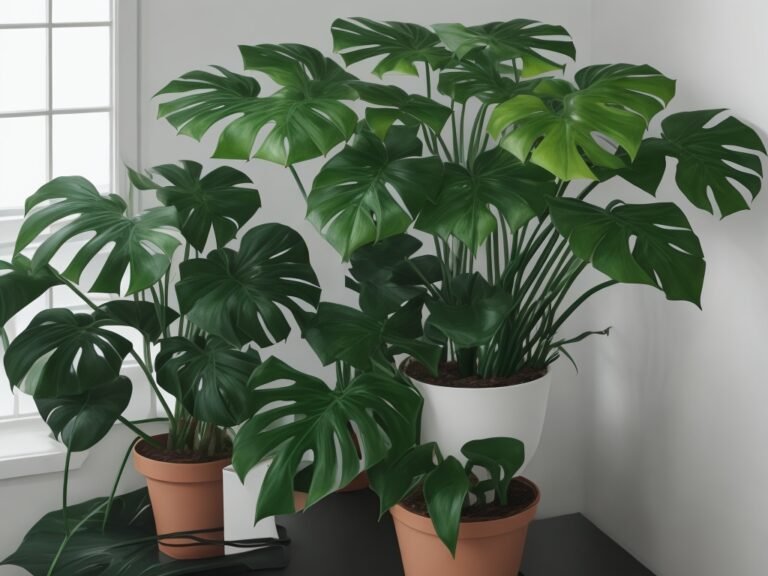What Is The Optimal Light Level For Monstera Plants?
Key Takeaways:
- Monstera plants thrive in bright, indirect light.
- Direct sunlight can cause leaf burn and damage to Monstera plants.
- Low light conditions can result in slow growth and reduced foliage on Monstera plants.
- Providing optimal light levels is essential for the health and vitality of Monstera plants.
Have you ever wondered about the perfect lighting conditions for your Monstera plants? Well, you’re in luck! In this article, we’ll delve into the fascinating world of Monstera plant lighting needs, exploring why proper lighting is crucial for their growth and well-being.
We’ll discuss the different types of light that Monstera plants thrive on, and the factors you should consider when providing the optimal light levels.
Plus, we’ll provide practical tips on how to ensure your Monstera plants receive the right amount of light. So, let’s shed some light on this topic and help your Monstera plants thrive!
| Light Level | Effect on Monstera Plants |
| Low light | Monstera plants grow slowly and may develop leggy, elongated stems with widely spaced leaves. Foliage may appear smaller, pale, and less vibrant. |
| Indirect medium light | Ideal light level for Monstera plants to thrive. They develop large, lush foliage with rich green color, deep serrations, and pronounced fenestrations. Growth rate is moderate. |
| Bright, direct light | Monstera plants can tolerate some direct sunlight, but excessive exposure can lead to leaf burn, scorched patches, and fading. Foliage may become wilted and the plant may suffer overall damage. |
Understanding the Lighting Needs of Monstera Plants
Understanding the lighting needs of Monstera plants helps ensure their healthy growth and development.
Importance of Proper Lighting for Monstera Plants
Proper lighting is vital for Monstera plants because it directly affects their growth and overall health.
Adequate light levels ensure that your Monstera can carry out photosynthesis efficiently, leading to strong stems, lush foliage, and vibrant growth.
Insufficient light can result in leggy stems, pale leaves, and stunted growth, while excessive light can cause sunburn and leaf damage.
Providing the right amount and type of light will help your Monstera thrive.
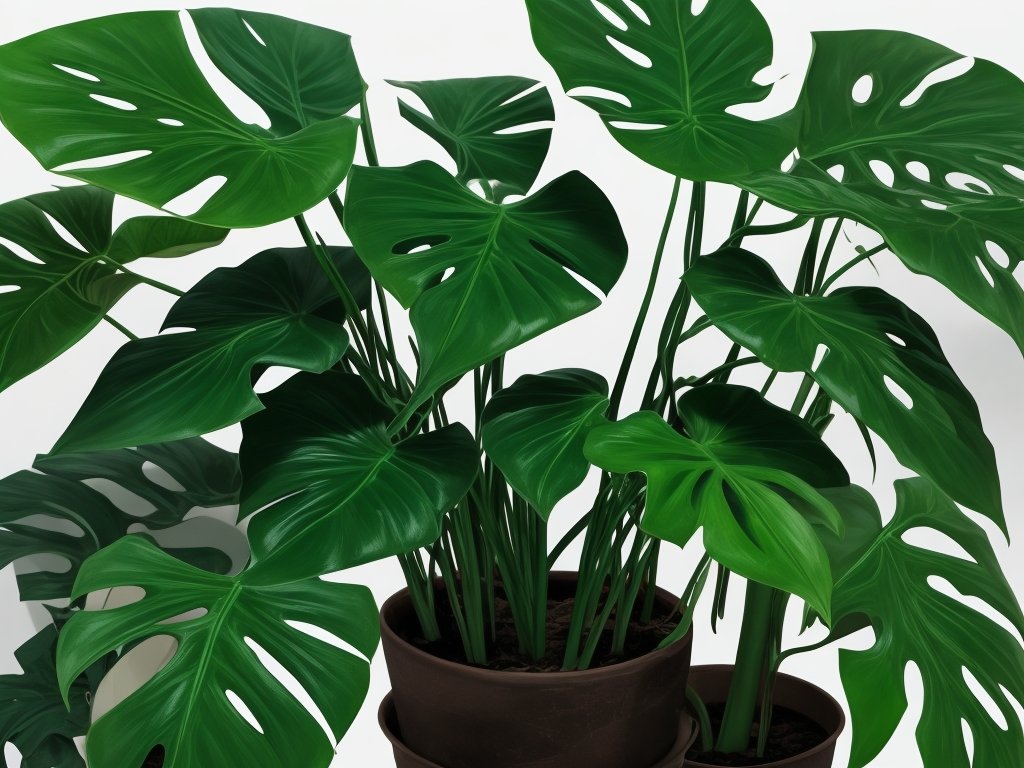
Types of Light for Monstera Plants
There are three types of light that are suitable for Monstera plants: indirect bright light, diffused natural light, and artificial light. Indirect bright light provides the perfect balance of brightness without direct sun exposure.
Diffused natural light refers to light that has been filtered or scattered, creating a softer and gentler light source.
Artificial light can be used as a supplemental source if natural light is insufficient. It’s important to avoid placing Monstera plants in direct sunlight as it can cause leaf burn.
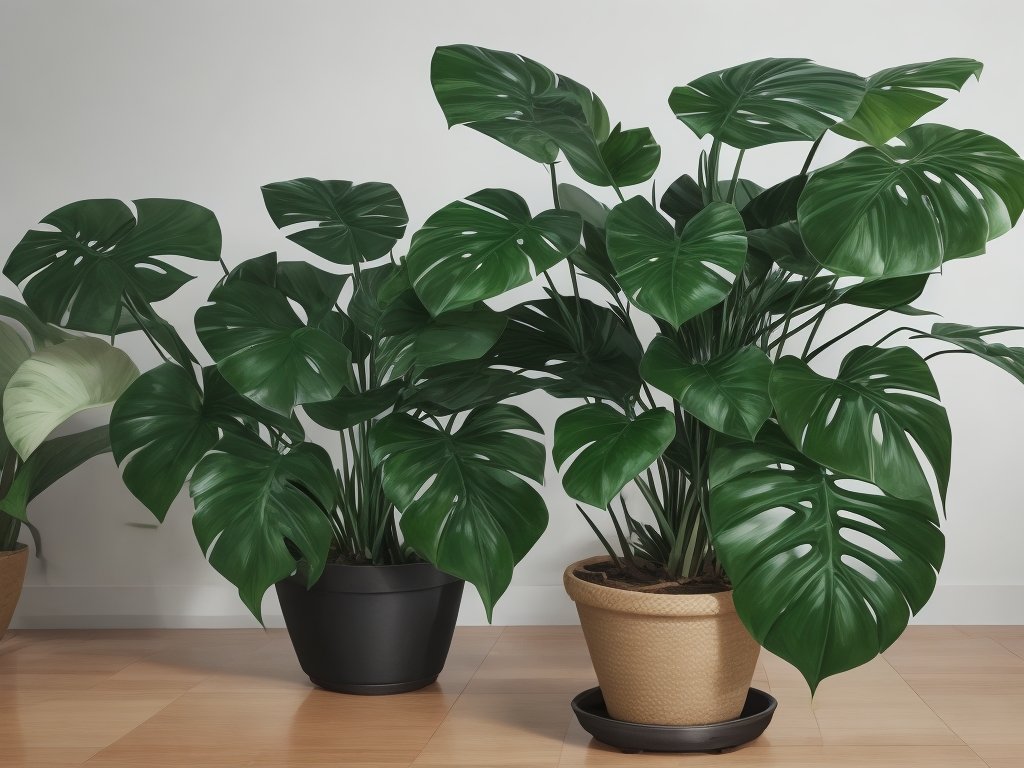
Factors to Consider for Optimal Light Levels
To determine the optimal light level for your Monstera plants, consider their native habitat, their light preferences, and the duration of light exposure.
Native Habitat of Monstera Plants
Monstera plants are native to the tropical rainforests of Central and South America.
They are found in countries like Mexico, Panama, Brazil, and Costa Rica.
These plants thrive in the warm and humid conditions of the rainforest, where they can receive filtered sunlight through the dense tree canopies.
Monstera plants are well adapted to the high humidity and indirect light found in their natural habitat.
Light Preferences of Monstera Plants
Monstera plants prefer bright, indirect light. They thrive in a well-lit environment, but direct sunlight can harm their leaves.
Consider placing them near a window with filtered sunlight or use sheer curtains to diffuse the light.
Avoid placing your Monstera plant in a dark corner as it may lead to stunted growth.
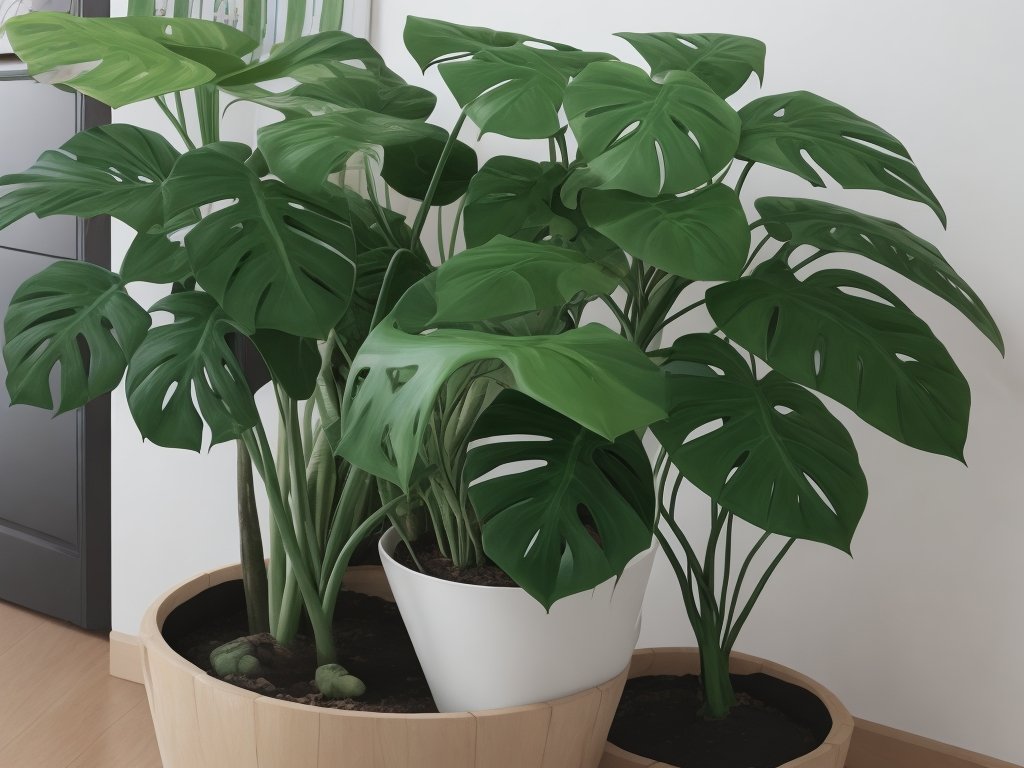
Duration of Light Exposure
The duration of light exposure is important for Monstera plants. They need roughly 10-12 hours of light each day to thrive.
This can be achieved by placing them in a well-lit area or using artificial light sources like grow lights.
Remember to avoid excessive lighting, as it can harm the plant.

Recommended Light Levels for Monstera Plants
For optimal growth, Monstera plants thrive in indirect bright light and diffused natural light. It’s important to avoid direct sunlight.
Indirect Bright Light
Indirect bright light is the ideal lighting condition for Monstera plants. It refers to placing the plant in a location where it receives bright, but not direct sunlight.
This can be achieved by keeping the plant near a window with a sheer curtain or by placing it a few feet away from a bright light source.
Indirect bright light provides the necessary brightness for healthy growth while protecting the plant from the scorching effects of direct sunlight.
Diffused Natural Light
Diffused natural light is the ideal type of light for monstera plants.
It provides a gentle, even distribution of light without any harsh rays.
This type of lighting mimics the plant’s natural habitat, allowing it to thrive.
To achieve diffused natural light, place your monstera near a south or east-facing window, or use sheer curtains to filter sunlight.
Avoid direct sunlight, as it can burn the leaves.
Avoiding Direct Sunlight
To ensure the well-being of your Monstera plant, it’s important to avoid direct sunlight. Excessive exposure to direct sunlight can cause the leaves to burn and turn brown.
Instead, opt for indirect bright light or diffused natural light to keep your Monstera happy and healthy.
How to Provide the Right Light for Your Monstera Plants
To provide the right light for your Monstera plants, consider their placement and positioning.
Placement and Positioning
For optimal light levels, place your Monstera plant in a bright area with indirect, diffused natural light. Avoid placing it in direct sunlight to prevent leaf burn.
If necessary, you can supplement with artificial lights, making sure not to overexpose your plant.
Consider rotating your plant occasionally for even light distribution.
Using Artificial Light Sources
Using artificial light sources can be a great way to provide the right light for your Monstera plants.
LED grow lights are a popular choice, as they emit the right spectrum of light that plants need for photosynthesis.
Place the lights above the plants and keep them on for 12-14 hours a day.
Ensure the light intensity is appropriate and avoid placing the lights too close to prevent heat damage.
Avoiding Excessive Lighting
To avoid excessive lighting for your Monstera plants, make sure to avoid placing them in direct sunlight.
Instead, opt for indirect bright light or diffused natural light.
Also, be mindful of the duration of light exposure.
If you notice any symptoms of excessive light, such as burnt leaves or yellowing foliage, consider adjusting the placement or using curtains or blinds to filter the light.
Signs of Inadequate or Excessive Light Levels
Here are signs to watch out for if your Monstera plant is not getting enough or is receiving too much light.
Symptoms of Insufficient Light
Symptoms of Insufficient Light include yellowing or pale leaves, stretching or leggy growth, and decreased leaf production.
The plant may also appear weak and spindly.
Symptoms of Excessive Light
Symptoms of Excessive Light:
- Leaf burns or brown spots on the leaves.
- Leaf discoloration or bleaching.
- Stunted growth or wilting.
- Yellowing or dropping of leaves.
- Dry or crispy leaves.
- Increased susceptibility to pests and diseases.
- General decline in plant health.
FAQ About Light Levels for Monstera Plants
How do I determine the amount of light my Monstera plant is receiving?
To determine the amount of light your Monstera plant is receiving, you can observe its location and assess the lighting conditions. Look for factors such as the direction of natural light, the presence of shadows, and how bright the light is.
You can also use a light meter or smartphone app to measure the light intensity.
Remember, finding the right balance of light is essential for your Monstera’s growth and health.
Can I place my Monstera plant in a room with artificial lighting only?
Yes, you can place your Monstera plant in a room with artificial lighting only.
However, it’s important to choose the right type of artificial light that mimics natural sunlight.
LED grow lights are a popular option because they provide the necessary spectrum of light for plant growth.
Make sure to position the lights at an appropriate distance and duration to meet your Monstera plant’s light requirements.
What should I do if my Monstera plant is not getting enough light?
If your Monstera plant is not getting enough light, there are a few things you can do. First, try moving it to a brighter location, preferably near a window with indirect sunlight.
You can also consider using artificial lights like grow lights to supplement its light needs.
Just ensure that the light is not too intense or close to the plant. Lastly, avoid placing your Monstera in a room with only artificial lighting as it may not provide the necessary light levels for the plant’s growth.
Can I use grow lights for my Monstera plant?
Yes, you can definitely use grow lights for your Monstera plant.
Grow lights provide the necessary light spectrum and intensity required for the plant’s growth.
LED grow lights are a popular choice because they are energy-efficient and emit the right wavelengths for photosynthesis.
Place the grow lights at an appropriate distance and provide a consistent light schedule to ensure optimal growth.
Should I rotate my Monstera plant for even light distribution?
Yes, you should rotate your Monstera plant for even light distribution.
This helps to prevent the plant from growing lopsided or leaning towards one direction.
By rotating it regularly, all sides of the plant receive an equal amount of light, promoting balanced growth and a healthier appearance.
Final Verdict
Providing the optimal light level for Monstera plants is crucial for their growth and overall health.
Understanding the lighting needs of Monstera plants, considering factors such as their native habitat and light preferences, and providing the right light source and duration are key to ensuring their well-being.
Indirect bright light and diffused natural light are recommended, while direct sunlight should be avoided.
Monitoring for signs of inadequate or excessive light levels and taking appropriate action is essential.
By providing the right light for your Monstera plants, you can help them thrive and flourish in your indoor space.



